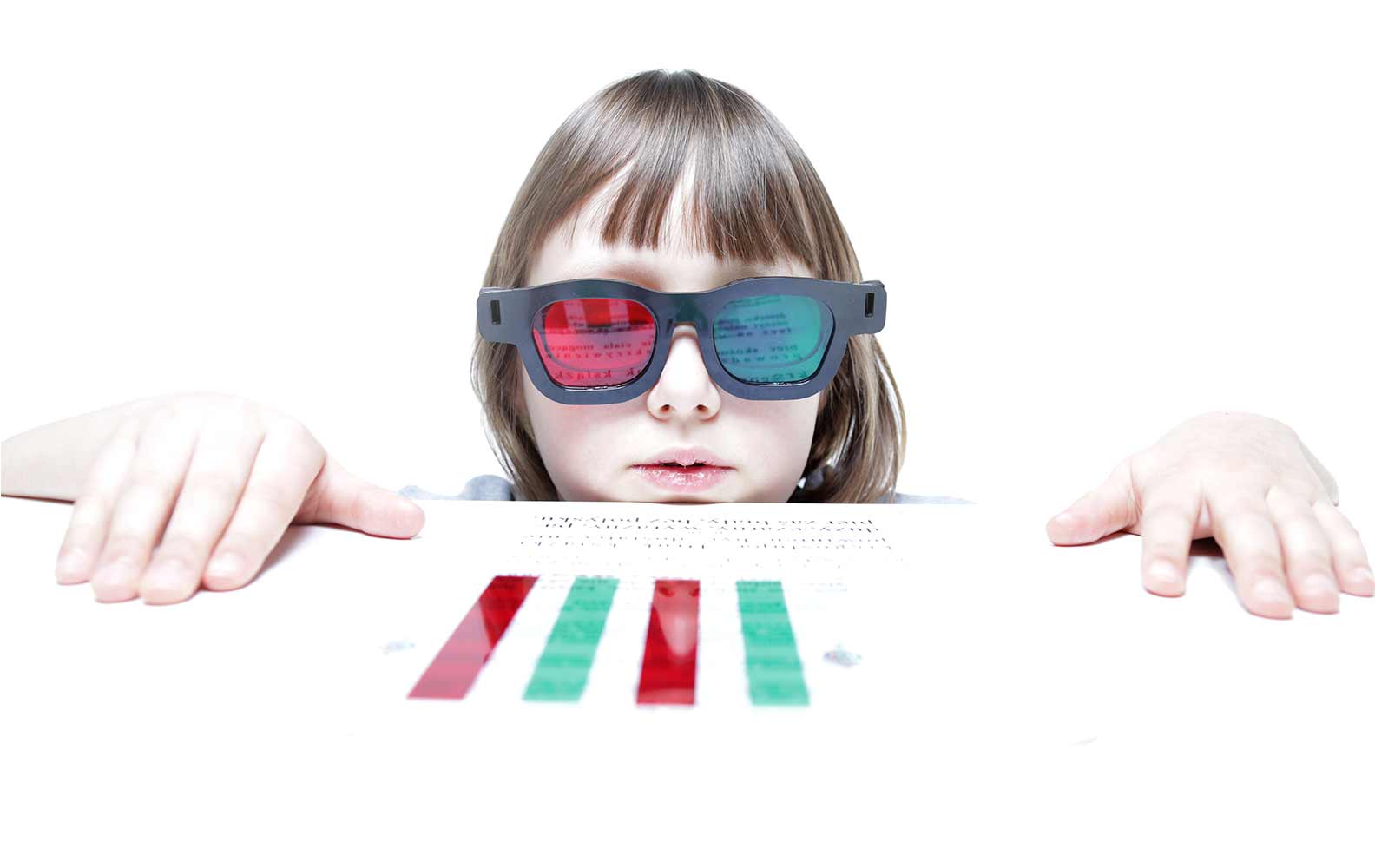Amblyopia (Lazy Eye)
Amblyopia (lazy eye)
Amblyopia or “lazy eye” is a neuro-developmental vision problem that typically occurs during infancy and early childhood. Those with amblyopia experience reduced eyesight (visual acuity) typically in one eye, even when that eye is best corrected with glasses or contact lenses.
Left untreated, amblyopia can affect a child’s self-image, work, school, and sports performance.
When the ability to use both eyes together (binocular vision) is disrupted during early childhood development, the brain turns off or suppresses the incoming signals from the affected eye.
Amblyopia occurs when vision development is disrupted in one of the following ways:
- Strabismic Amblyopia – This common form of amblyopia occurs when the eyes are misaligned, a condition known as strabismus. To avoid double vision, the brain shuts off or suppresses the misaligned eye.
- Refractive Amblyopia –This form of amblyopia typically occurs when one eye has significantly uncorrected nearsightedness, farsightedness, and/or astigmatism. When this happens, the brain favors the eye with better visual clarity and actively suppresses the poorer seeing eye.
- Deprivation Amblyopia –This form of amblyopia occurs when light is blocked from entering an eye, such as when a patient has cataracts, severe astigmatism, eyelid ptosis, or another form of ocular pathology. As a result of the obstruction, one eye continuously receives less stimulation, and the brain favors the eye without the obstruction, while turning off or suppressing the poorer seeing eye.
Amblyopia can be identified
Amblyopia affects over 12 million people in the US alone (about 3.5% of the US population) and often goes undetected. However, this condition can be easily identified by a comprehensive developmental eye health and vision evaluation. Those with amblyopia may have reduced eyesight (visual acuity) varying from:
Mild 20/25 – 20/40
Moderate 20/50 – 20/80
Severe worse than 20/100
Symptoms of Amblyopia typically include:
- Squinting, shutting, or covering an eye
- Impaired depth perception
- Poor hand-eye coordination
Tripping and/or accident prone - Slower reading speed and comprehension
- Reduced visual processing speed
TREATMENT – BEYOND PATCHING
Amblyopia does not mean a child has one “good” eye and one “bad” eye. Rather, both eyes typically have reduced visual function. Depth perception, focusing, and eye movement skills are typically lacking in both eyes, not just the amblyopic eye.
Amblyopia therapy aims at improving the vision while both eyes are open.
Until recent advancements, treating amblyopia with an eye patch was the general model of care. However, patching:
- Is very uncomfortable for the patient
- Has multiple negative side effects
- Does not usually develop the patient’s ability to obtain normal binocular vision with depth perception
- Is a crude, over 150-year-old method that has been proven inferior in current research
Now, there are better evidence-based methods for treating amblyopia that go beyond patching. New research shows that age is not a barrier to treatment for Amblyopia when the patient, even an adult patient, is participating in visually interesting techniques that are engaging and designed to “turn-on” the brain function of both eyes working together. Yes, with advanced methods, adults with Amblyopia can be successfully treated as well!
With Vision Therapy, we can give the patient neurological stimulation and feedback, which facilitates the ability to use both eyes together. We utilize interactive games and activities to improve the brain’s utilization of binocular teaming, depth perception, ocular motor skills, and much more. Lenses, prisms, and colored filters are used to improve the patient’s vision and eye-teaming while both eyes are open.

